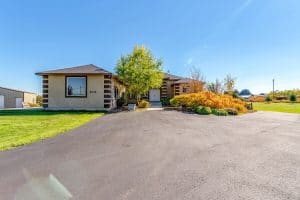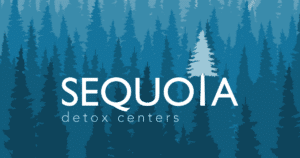
Moonlight Mountain Recovery
Pocatello , ID

Moonlight Mountain Recovery – Nampa
Nampa , ID

Sequoia Detox Centers
Spokane Valley , WA

Idaho Addiction Treatment
In the past several years, Idaho has experienced a dangerous heroin epidemic. In many communities, heroin use has surpassed methamphetamine, which was one of the most commonly abused drugs for decades.
Idaho State Police seize thousands of pounds of illicit drugs every year from traffic stops, airport security checkpoints and various establishments. Between 2014 and 2015, the amount of heroin taken off the streets increased nearly 800 percent.
The sudden surge of heroin abuse in Idaho has been linked to tighter regulations on prescription painkillers. Without access to prescriptions, addicted people look for other ways to continue use and avoid withdrawals. Heroin causes similar effects to prescription opioids, making it a common substitute.
Prescription drugs were dispensed like candy, quite honestly, for a long time. And people started using those and have become addicted to those…well now, those restrictions have really clamped down on the dispensing of those and so the next thing to go to is heroin because now the pills aren’t readily available.
Across Idaho, heroin-related crimes are also on the rise. In some cities, arrests involving heroin nearly double every year. For example, Boise made 10 arrests for heroin possession in 2013. In 2014, that number increased to 25. By 2015, 43 arrests were made relating to heroin.
As a result of statewide initiatives aimed at preventing and reducing substance abuse, more Idaho residents are seeking treatment. In a single day, more than 6,500 individuals were enrolled in substance abuse treatment in 2013.
Substances commonly treated for in Idaho rehab facilities include:
- Heroin
- Marijuana
- Stimulants
- Opioids
- Cocaine
Of the people in Idaho treatment programs, 20 percent were recovering from drug use only, 19.3 percent from alcohol use only and 60.6 percent from both drug and alcohol use.

Break free from addiction.
You have options. Talk about them with a treatment provider today.
Laws Of Idaho Drug Use
Idaho has many criminal and civil penalties in place for the possession, distribution and manufacture of a controlled dangerous substance (CDS). Substances are divided into six schedules based on their risk of dependency and potential medical use. For instance, schedules I and II substances have the highest addiction risk, whereas schedules V and VI have a low potential for abuse and may be accepted for medical purposes.
Substance schedules are organized in the following manner:
- Schedule I: Heroin, LSD, peyote, methaqualone, nicocodeine and benzylmorphine.
- Schedule II: Morphine, codeine, methadone, cocaine, oxycodone and methamphetamine.
- Schedule III: Chlorhexadol, nalorphine, gamma-hydroxybutyrate and methyprylon.
- Schedule IV: Chloral hydrate, cathine, buprenorphine, zolpidem and pentazocine.
- Schedules V and VI: Limited quantities of certain narcotic drugs typically for antitussive and antidiarrheal purposes.
While Idaho drug charges depend on the substance and the quantity, appropriate legal sentencing is at the discretion of a judge.
| Schedule | Criminal Charge | Potential Sentence |
|---|---|---|
| Schedules I and II – narcotic drugs | Felony | Up to life in prison and $25,000 fine |
| Schedule I and II – non-narcotic drugs | Felony | Up to 5 years in jail and $15,000 fine |
| Schedule III | Felony | Up to 5 years in jail and $15,000 fine |
| Schedule IV | Felony | Up to 3 years in jail and $10,000 fine |
| Schedules V and VI | Misdemeanor | Up to 1 year in jail and $5,000 fine |
Marijuana Laws In Idaho
All forms of recreational or medical marijuana are illegal in Idaho. Residents who are found possessing, manufacturing or distributing marijuana will face severe legal consequences. Additionally, some legal penalties come with mandatory minimum sentences (MMS) which mean you must serve the entire sentence without an opportunity for parole.
The possession of marijuana for personal uses is prohibited; however, it faces less harsh penalties than possession with an intent to distribute.
| Offense | Criminal Charge | Potential Sentence |
|---|---|---|
| Personal Use | ||
| 3 oz or less | Misdemeanor | 1 year in jail and $1,000 fine |
| 3 oz – less than 1 lb | Felony | 5 years in jail and $10,000 fine |
| With intent to distribute | ||
| 1 – less than 5 lbs or
25 – less than 50 plants |
Felony | 1 year in jail and $50,000 fine |
| 5 – less than 25 lbs or
50 – less than 100 plants |
Felony | 3 years in jail and $50,000 fine |
| 25 lbs or more or
100 plants or more |
Felony | 5 years in jail and $50,000 fine |
| Where a person under the age of 18 is present | Felony | 5 years in jail and $5,000 fine |
The possession of one pound or more, or 25 plants or more, is considered trafficking in Idaho.
Addiction Treatment Laws In Idaho
Substance abuse has grown into a national epidemic. Many states, like Idaho, are implementing various initiatives to encourage prevention, intervention and treatment throughout their communities. These initiatives are known as harm reduction laws. Through programs such as naloxone administration, prescription drug monitoring programs and take-back efforts, Idaho is paving the way for a safe and healthy future.
Availability Of Naloxone In Idaho
In July 2015, House Bill 108 was enacted which allows Idaho residents to obtain naloxone. When administered, naloxone helps reverse the negative impact caused by an opioid overdose. It comes in three different forms: injection, nasal spray and auto-injector applied over clothing to the thigh.
Naloxone aids in reducing the number of overdose-related deaths in Idaho. The medication works by blocking the brain’s opioid receptors and restores normal breathing.
You can obtain naloxone at substance abuse treatment organizations, pharmacies and even some street kiosks. Some agencies are offering training to individuals, family members and friends to ensure they’re prepared in the event of an emergency.
It is a painful, uncomfortable process to have an overdose reversed, so it’s not an experience people will want to endure repeatedly. If we can keep people alive, it gives them an opportunity for recovery.
Prescription Drug Monitoring Program (PDMP)
The majority of states across the U.S. have an operational prescription drug monitoring program (PDMP) or have enacted legislation to establish one. Idaho’s PDMP, in particular, was established in 1967 and would later fall under the Board of Pharmacy in September 2004.
In Idaho, the PDMP is used for monitoring schedules II-IV controlled substance prescriptions. Doctors and pharmacists are able to view a patient’s medication history to identify potential substance abuse.
A PDMP also helps Idaho health providers:
- Reduce prescription drug abuse.
- Track potential insurance fraud.
- Monitor patients’ medications.
- Intervene when someone is struggling with an addiction.
- Provide better quality care.
Idaho’s Prescription Drug Take-Back Program
Prescription drug abuse is a concerning problem for many Idaho residents. In an effort to educate the public about prescription drug safety and disposal, the Drug Enforcement Administration holds an annual Drug Take-Back Day. In 2015, Idaho collected more than 3,000 pounds of unwanted and expired prescriptions medications.
Drug take-back locations are provided in many Idaho counties. Individuals can safely and responsibly discard of any unused, unwanted or expired prescription medications at the approved location sites.
Idaho’s drug take-back program also offers tips on keeping your prescriptions out of the reach of others. Several prevention tips are:
- Lock medications in a safe location.
- Check inventory of your medications frequently to ensure family members and friends are not accessing them.
- Talk to children about the dangers of using prescriptions outside of their intended purpose.
Treatment Centers In Idaho
The Idaho Office of Drug Policy (ODP) decides how funds from the Substance Abuse Prevention Block Grant (SABG) are allocated. As a requirement by the Substance Abuse and Mental Health Services (SAMHSA), no less than 20 percent of the SABG allotment should be used on substance abuse prevention strategies. These strategies may encompass education measures, community-based programs and distributing information about addiction.
Other SABG funds are generally used to help:
- Pregnant women and women with dependent children.
- Intravenous drug users.
- Tuberculosis services.
- Early intervention services for HIV/AIDS.
Every year, Idaho receives an allocation from the Substance Abuse Prevention Block Grant (SABG) to help fund statewide substance abuse services and community coalitions.
Finding the right addiction center that fits your needs is an important element in your treatment and recovery. While recovery centers all help in combatting an addiction, no two programs are the same. Some offer basic amenities and treatment options, whereas others have an array of therapies and activities. You can also broaden your search by looking at facilities both in-state and out-of-state. This will help you check off all the boxes of your must-have treatment list.
There’s no better day than today to start your recovery plan. Find a treatment facility nearby now to explore different programs.
Looking for a place to start?
Join the thousands of people that have called a treatment provider for rehab information.
Free and confidential
Available 24/7
Access to professional treatment
Addiction Treatment Laws In Idaho
Substance abuse has grown into a national epidemic. Many states, like Idaho, are implementing various initiatives to encourage prevention, intervention and treatment throughout their communities. These initiatives are known as harm reduction laws. Through programs such as naloxone administration, prescription drug monitoring programs and take-back efforts, Idaho is paving the way for a safe and healthy future.
Availability of Naloxone In Idaho
In July 2015, House Bill 108 was enacted which allows Idaho residents to obtain naloxone. When administered, naloxone helps reverse the negative impact caused by an opioid overdose. It comes in three different forms: injection, nasal spray and auto-injector applied over clothing to the thigh.
Naloxone aids in reducing the number of overdose-related deaths in Idaho. The medication works by blocking the brain’s opioid receptors and restores normal breathing.
You can obtain naloxone at substance abuse treatment organizations, pharmacies and even some street kiosks. Some agencies are offering training to individuals, family members and friends to ensure they’re prepared in the event of an emergency.
It is a painful, uncomfortable process to have an overdose reversed, so it’s not an experience people will want to endure repeatedly. If we can keep people alive, it gives them an opportunity for recovery.
Prescription Drug Monitoring Program (PDMP)
The majority of states across the U.S. have an operational prescription drug monitoring program (PDMP) or have enacted legislation to establish one. Idaho’s PDMP, in particular, was established in 1967 and would later fall under the Board of Pharmacy in September 2004.
In Idaho, the PDMP is used for monitoring schedules II-IV controlled substance prescriptions. Doctors and pharmacists are able to view a patient’s medication history to identify potential substance abuse.
A PDMP also helps Idaho health providers:
- Reduce prescription drug abuse.
- Track potential insurance fraud.
- Monitor patients’ medications.
- Intervene when someone is struggling with an addiction.
- Provide better quality care.
Idaho’s Prescription Drug Take-Back Program
Prescription drug abuse is a concerning problem for many Idaho residents. In an effort to educate the public about prescription drug safety and disposal, the Drug Enforcement Administration holds an annual Drug Take-Back Day. In 2015, Idaho collected more than 3,000 pounds of unwanted and expired prescriptions medications.
Drug take-back locations are provided in many Idaho counties. Individuals can safely and responsibly discard of any unused, unwanted or expired prescription medications at the approved location sites.
Idaho’s drug take-back program also offers tips on keeping your prescriptions out of the reach of others. Several prevention tips are:
- Lock medications in a safe location.
- Check inventory of your medications frequently to ensure family members and friends are not accessing them.
- Talk to children about the dangers of using prescriptions outside of their intended purpose.
Treatment Centers In Idaho
The Idaho Office of Drug Policy (ODP) decides how funds from the Substance Abuse Prevention Block Grant (SABG) are allocated. As a requirement by the Substance Abuse and Mental Health Services (SAMHSA), no less than 20 percent of the SABG allotment should be used on substance abuse prevention strategies. These strategies may encompass education measures, community-based programs and distributing information about addiction.
Other SABG funds are generally used to help:
- Pregnant women and women with dependent children.
- Intravenous drug users.
- Tuberculosis services.
- Early intervention services for HIV/AIDS.
Every year, Idaho receives an allocation from the Substance Abuse Prevention Block Grant (SABG) to help fund statewide substance abuse services and community coalitions.
Finding the right addiction center that fits your needs is an important element in your treatment and recovery. While recovery centers all help in combatting an addiction, no two programs are the same. Some offer basic amenities and treatment options, whereas others have an array of therapies and activities. You can also broaden your search by looking at facilities both in-state and out-of-state. This will help you check off all the boxes of your must-have treatment list.
There’s no better day than today to start your recovery plan. Contact a treatment provider now to explore rehab options.
Published:
Author
Jeffrey Juergens

-
Jeffrey Juergens earned his Bachelor’s and Juris Doctor from the University of Florida. Jeffrey’s desire to help others led him to focus on economic and social development and policy making. After graduation, he decided to pursue his passion of writing and editing. Jeffrey’s mission is to educate and inform the public on addiction issues and help those in need of treatment find the best option for them.
- More from Jeffrey Juergens
- Alabama
- Alaska
- Arizona
- Arkansas
- California
- Colorado
- Connecticut
- Delaware
- Florida
- Georgia
- Hawaii
- Idaho
- Illinois
- Indiana
- Iowa
- Kansas
- Kentucky
- Louisiana
- Maine
- Maryland
- Massachusetts
- Michigan
- Minnesota
- Mississippi
- Missouri
- Montana
- Nebraska
- Nevada
- New Hampshire
- New Jersey
- New Mexico
- New York
- North Carolina
- North Dakota
- Ohio
- Oklahoma
- Oregon
- Pennsylvania
- Rhode Island
- South Carolina
- South Dakota
- Tennessee
- Texas
- Utah
- Vermont
- Virginia
- Washington
- West Virginia
- Wisconsin
- Wyoming
- Guam
- Puerto Rico
- US Pacific Islands
- US Virgin Islands
- Washington D.C.
- American Samoa
Sources
Feature your center
Ready to connect with treatment seekers across the country? Enter your information to learn about our advertising options and get in contact with our development team.